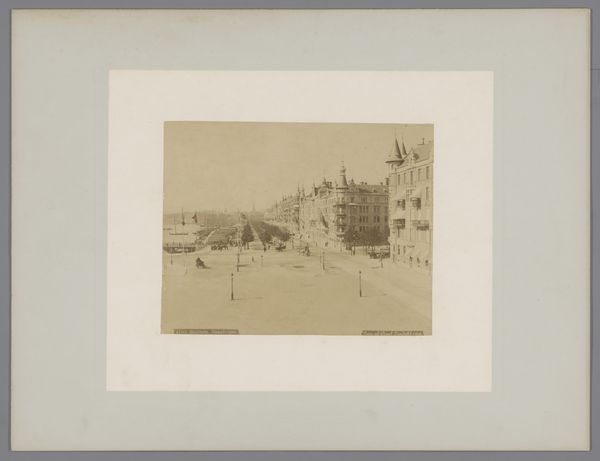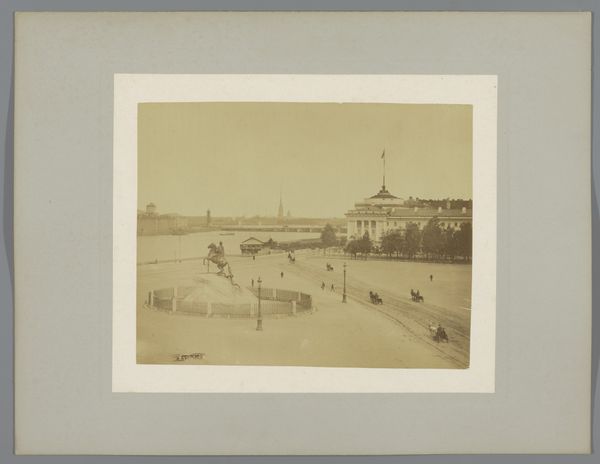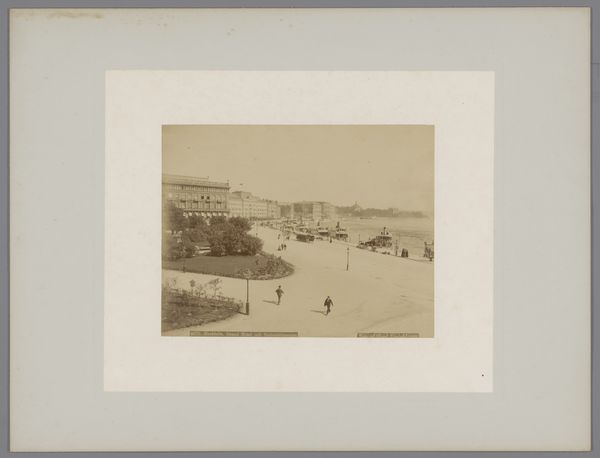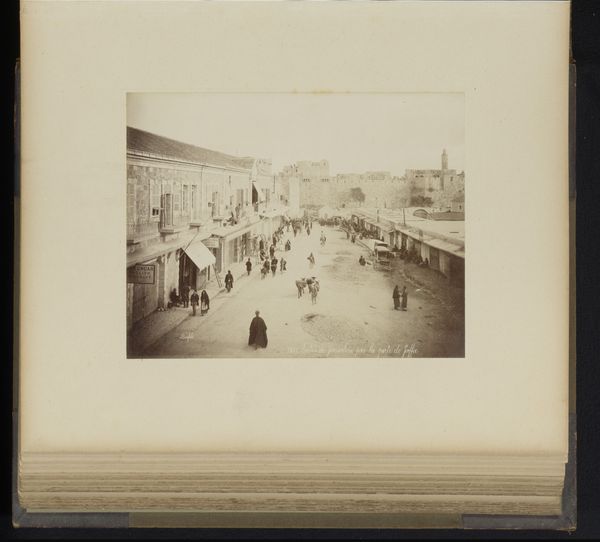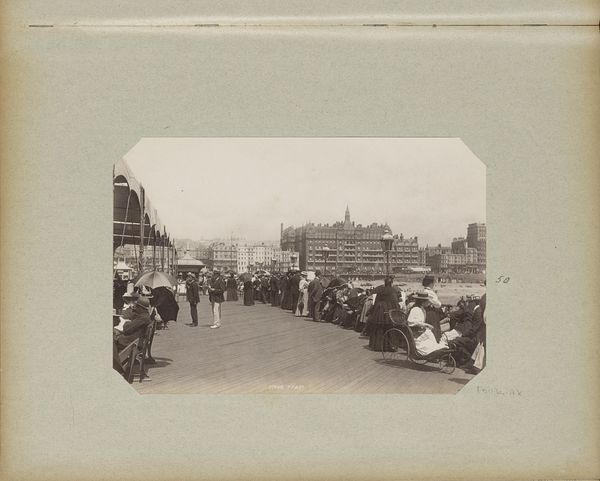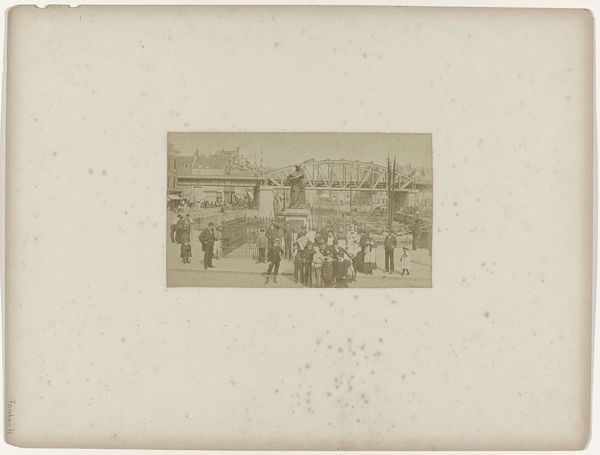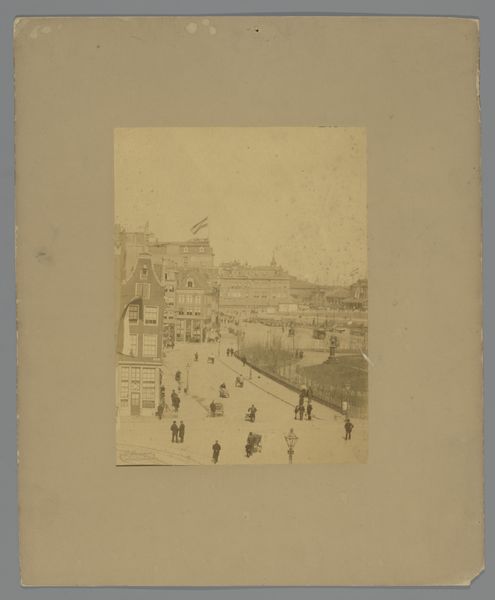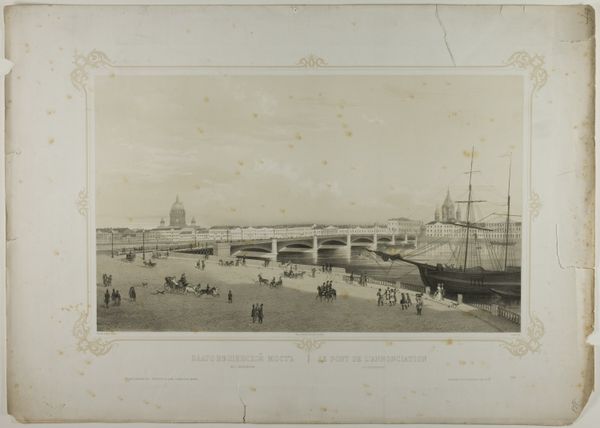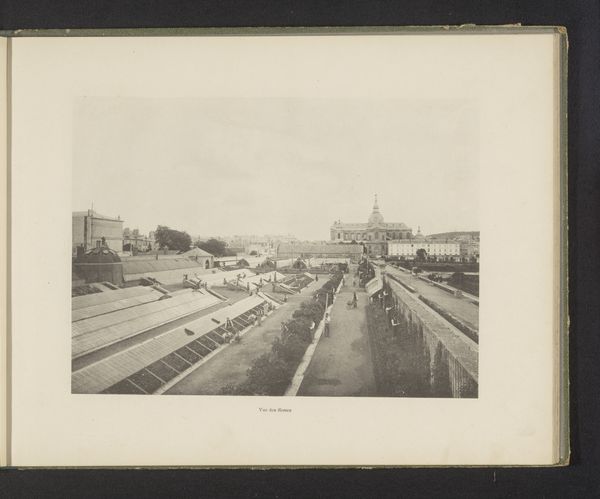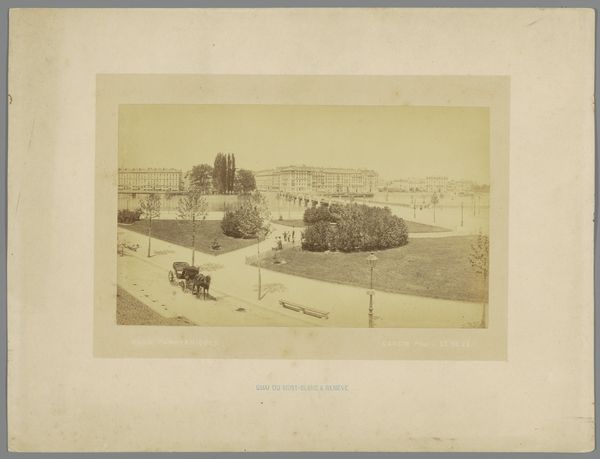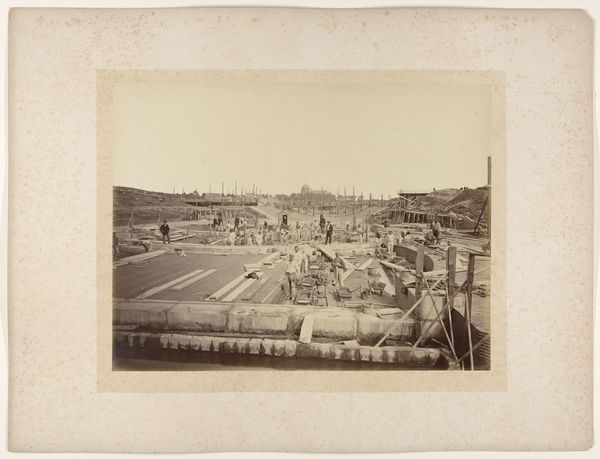
Dimensions: height 223 mm, width 280 mm, height 342 mm, width 387 mm
Copyright: Rijks Museum: Open Domain
Editor: This is a photograph titled "Place de la Concorde, Paris, France," attributed to Léon & Lévy, sometime between 1885 and 1910. The sepia tone gives it such a nostalgic feeling. What do you see in this piece? Curator: I see the development and popularization of photography as a form of labor. Prior to this, representing the Place de la Concorde required an artist, commissioned usually by the bourgeoisie, to render this image using artisanal techniques. Photography changed that. This is a mass produced image using novel technology dependent upon the chemical industry, one sold for consumption. What story does the production and distribution tell us about this time? Editor: So you're saying that beyond the aesthetic of Impressionism or the theme of the cityscape, the *making* of the photograph itself reflects major shifts in society? Curator: Precisely. How many copies of this image were made and disseminated? What audience did it serve? Understanding these questions reveals photography’s role in shaping our perceptions and even democratizing art – or commodifying it. Are these images creating tourism? Documenting Paris’ transformation? The implications are endless. Editor: That's fascinating. I never considered the process itself could be so informative. It’s like the photograph is a material document of a changing world. Curator: It absolutely is. And by analyzing its production and consumption, we can uncover a wealth of social and economic narratives embedded within. Editor: That gives me a lot to think about! Thanks for broadening my view. Curator: My pleasure! Materiality reveals unexpected perspectives, if you only dig deep enough.
Comments
No comments
Be the first to comment and join the conversation on the ultimate creative platform.
